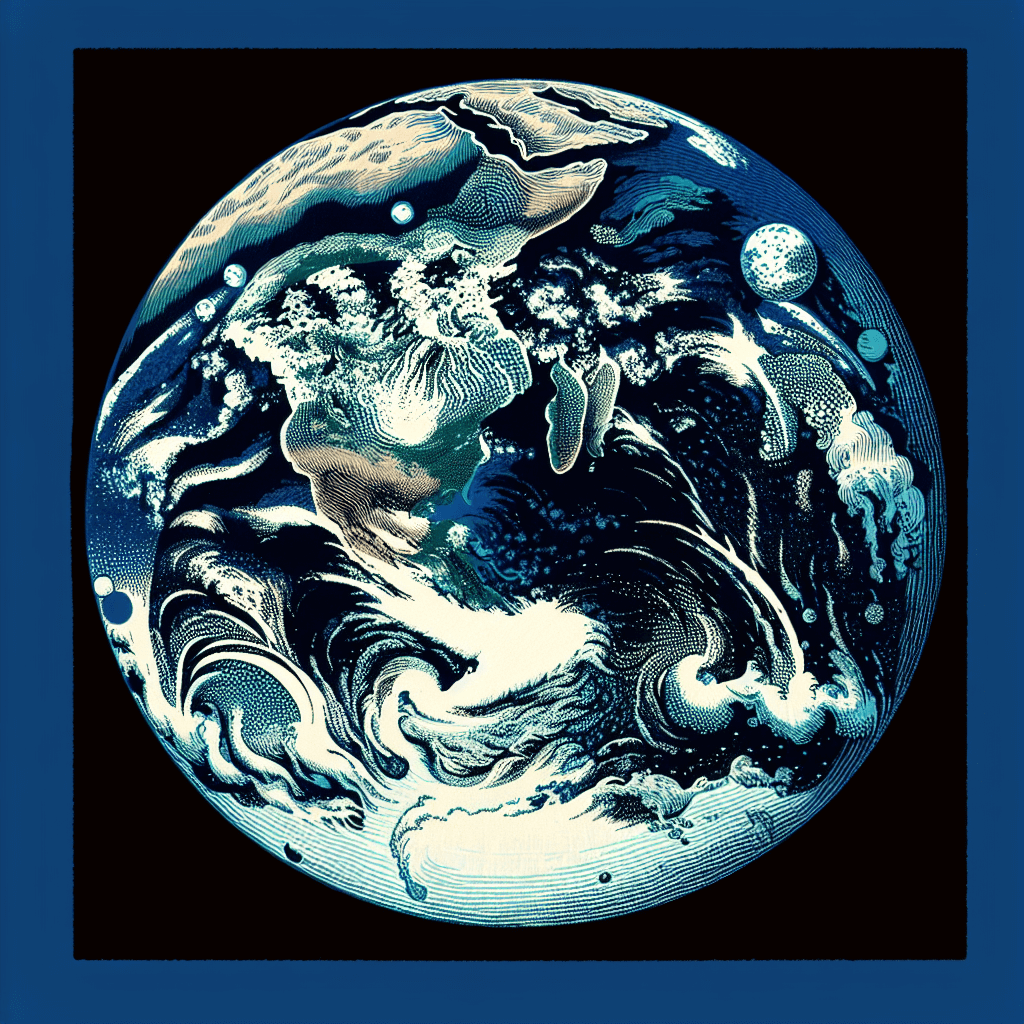The Blue Marvel: An In-depth Look at Planet Earth
syndu | Oct. 28, 2023, 10:10 a.m.

The Blue Marvel: An In-depth Look at Planet Earth
Welcome back to our Celestial Bodies Exploration series! Today, we're turning our telescopes towards our very own home - the Earth.
Physical Characteristics:
Earth, the third planet from the sun, is the fifth largest planet in our solar system. It's the only known celestial body to support life, thanks to its unique physical characteristics. The Earth has a diameter of about 12,742 kilometers and is composed of several layers: the crust, mantle, outer core, and inner core.
The Earth's crust, where we live, varies in depth from 5 to 70 kilometers. Beneath the crust lies the mantle, a hot, viscous layer that extends up to 2,890 kilometers below the surface. The outer core, a sea of super-hot liquid iron and nickel, surrounds the inner core, a hot ball of solid metal.
Atmosphere and Climate:
Earth's atmosphere is a thin layer of gases that surrounds the planet, protecting us from harmful solar radiation and helping to maintain a stable climate. It's composed primarily of nitrogen (78%) and oxygen (21%), with small amounts of argon, carbon dioxide, and other gases.
Our planet's climate varies widely, from the extreme cold of the polar ice caps to the intense heat of the equatorial regions. This diversity in climate supports a wide range of ecosystems and life forms.
Unique Features and Phenomena:
One of the Earth's most unique features is the presence of liquid water. About 71% of the Earth's surface is covered by water, mostly in the form of oceans. This abundance of water is a key factor that enables life to exist on Earth.
Another unique feature is the Earth's magnetic field, generated by the swirling motion of liquid iron in the outer core. This magnetic field extends far into space, forming a protective shield that deflects harmful solar particles.
Earth is also home to a variety of natural phenomena, from the breathtaking spectacle of the Northern and Southern Lights, caused by solar particles interacting with the Earth's magnetic field, to the awe-inspiring power of earthquakes and volcanoes, driven by the movement of tectonic plates beneath the Earth's surface.
In conclusion, Earth is a unique and dynamic planet, teeming with life and brimming with natural wonders. As we continue our exploration of the celestial bodies in our solar system, it's worth remembering that our own planet has plenty to marvel at.
Join us next time as we journey to our fiery neighbor, Mars!


